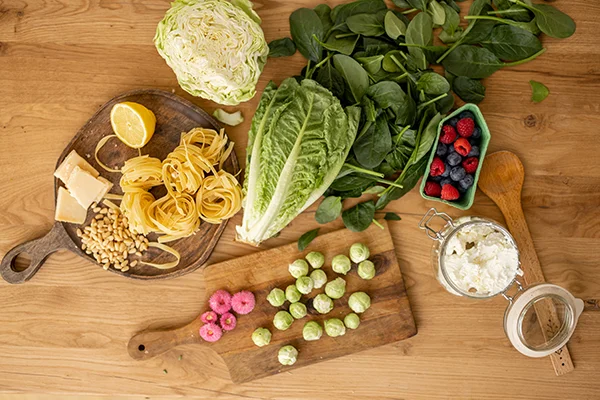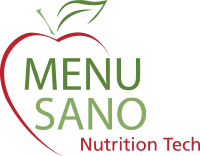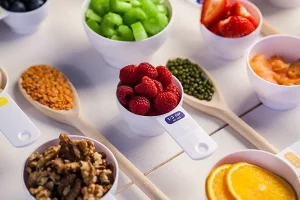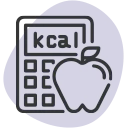Key Takeaways
- Yield in cooking refers to the final amount of food after preparation and cooking.
- Understanding yield helps control portion sizes, costs, and nutrition accuracy.
- Accurate yield calculations are essential for recipe costing, menu pricing, and food labelling compliance.
- MenuSano simplifies yield tracking and nutrition analysis, helping businesses reduce waste and increase profitability.
In the culinary world, precision and cost control are key. One term that plays a critical role in kitchen operations and food business profitability is “yield.” But what does yield mean in cooking, and how can understanding it improve your bottom line?
What Does Yield Mean in Cooking?
Yield in cooking refers to the amount of product that results after preparation or cooking. This could mean the number of servings, portions, or the final weight of a prepared dish. It’s a crucial concept for chefs, restaurant managers, and food manufacturers who must control costs, reduce waste, and ensure consistency across their menus or product lines.
When you ask, “What’s a yield?” you’re asking how much edible or usable product you will get from the ingredients you’ve started with. Whether trimming meat, peeling vegetables, or baking a batch of muffins, your recipe yield affects both the cost and the profitability of what you’re preparing.
Why Yield Matters in Recipe Costing
Knowing your recipe yield is essential to accurate food costing. If you price your menu items based on the AP weight rather than the EP or cooked weight, you might underprice your dish, lose profit, or end up with inconsistent servings.
Let’s say your chicken stir-fry recipe calls for 5 lbs of raw chicken breasts. If you don’t account for the fact that cooking reduces that to 4 lbs, your cost per portion will be off, and your profit margins will suffer.
How Yield Affects Ingredient Costs
- Waste Loss: Not all ingredients are 100% usable. Fat, bones, peels, and skins can make up a significant portion of the original weight.
- Shrinkage During Cooking: High-heat cooking methods like grilling and roasting cause shrinkage due to moisture loss.
- Variability: Different batches of the same ingredient may yield different amounts depending on quality, moisture content, and supplier.
This directly impacts the amount of food you need to purchase and prepare and how you price dishes on your menu or products in your catalogue.
Yield Calculations: A Practical Example

To illustrate the concept of yield and its impact on costs, consider the following example:
You buy 10 lbs of beef chuck roast at $5/lb for $50. After trimming fat and bones, you’re left with 7.5 lbs of usable meat. After cooking, you’re left with 6 lbs of finished product.
- Edible Product Cost = $50 / 7.5 lbs = $6.67/lb
- Cooked Cost = $50 / 6 lbs = $8.33/lb
If your recipe serves 12 portions, your cost per portion is $8.33 x 0.5 lbs = $4.17
Failing to consider this would lead to underpricing the dish, eating into your profit margins without realizing it.
What Does Yield Mean in a Recipe?
In a recipe, yield means the total quantity of food produced. This can be listed in:
- Number of servings: “Yields 8 servings”
- Total volume or weight: “Yields 2 quarts of soup”
- Unit-based portions: “Yields 12 muffins”
Knowing the yield ensures consistency in portion control, food quality, and cost management when scaling recipes up or down, which is common in commercial kitchens.
Adjusting for Yield in Food Production
Recipe standardization and yield adjustments are crucial in bulk food production and manufacturing. Whether you’re creating ready-made meals or producing ingredients in large quantities, your yields directly impact your operations:
- Inventory control
- Ingredient purchasing
- Nutritional labelling
- Cost forecasting
Inaccurate yield assumptions lead to overproduction, waste, or under-delivery of promised servings or nutrition.
Yield and Nutrition Labelling
Yield also plays a significant role in nutrition labelling, especially when labelling is required for pre-packaged foods or menu nutrition transparency.
If your product loses fat or water during cooking, the final nutritional content per portion changes. Regulatory compliance in Canada (CFIA) and the U.S. (FDA) requires accurate nutrient data based on the final yield, not just raw ingredients.
This makes tracking yield percentages even more critical for nutrition facts labels and front-of-package (FOP) labelling.
How MenuSano Helps You Manage Yield in Recipes
At MenuSano, we understand the complexities of yield and how they affect every aspect of your food business — from ingredient costing to nutritional analysis. Our nutrition analysis software is designed to simplify the process of creating nutrition labels.
Whether you’re a restaurant, food manufacturer, or catering company, MenuSano helps you take the guesswork out of recipe management. You’ll reduce waste, improve profitability, and ensure compliance — all while maintaining consistency and quality. You can also manually adjust yield and calculate cooking losses. Let MenuSano be your partner in smarter, more profitable food production.



















